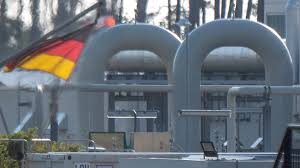Benchmark natural gas prices in Europe continued their freefall this week and were headed to post the longest weekly losing streak since 2013 amid weak demand.
The front-month futures at the TTF hub, the benchmark for Europe’s gas trading, plunged by 5.7% to $25.75 (24 euros) per megawatt-hour (MWh) as of 12:34. p.m. GMT on Friday.
Gas prices were on course to drop by as much as 15% this week alone, according to estimates by The Wall Street Journal. Prices have now tumbled by 66% since the beginning of this year and by 90% since the August 2022 record-high of over $322 (300 euros) per MWh.
Gas prices are now at their lowest since the start of the energy crisis in Europe in the autumn of 2021, ahead of the 2021/2022 winter season, with the crisis reaching a peak later in 2022 after the Russian invasion of Ukraine and the lack of most of Russia’s pipeline gas supply.
Weak demand from the industry and from power generators coupled with the highest gas inventories for this time of the year in years to send the benchmark prices falling since the milder-than-usual winter ended.
Currently, gas inventories in Europe are comfortably high for this time of the year. As of May 24, natural gas storage sites in the EU were 66.71% full, according to data from Gas Infrastructure Europe. The level of gas in storage is the highest for this time of the year in at least a decade.
Gas demand, on the other hand, is currently weak amid mild spring weather in most parts of Europe, and high renewable power generation. In industry, consumption of gas hasn’t picked up yet, despite the falling prices, partly due to signs of industrial slowdown. Industry customers have not started to switch to natural gas from coal en masse yet.

 Iran Energy News Oil, Gas, Petrochemical and Energy Field Specialized Channel
Iran Energy News Oil, Gas, Petrochemical and Energy Field Specialized Channel



